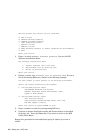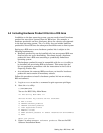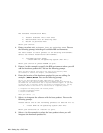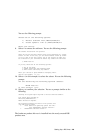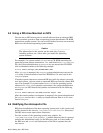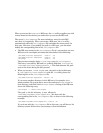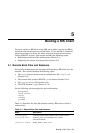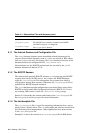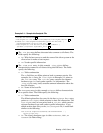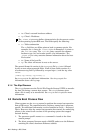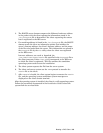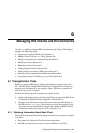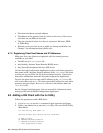
Table 5–1: Remote Boot Files and Daemons (cont.)
Name Description
/usr/sbin/inetd
The Internet server daemon
/usr/sbin/joind
The BOOTP server daemon (handles both BOOTP
and DHCP requests, if configured)
/usr/sbin/tftpd
The tftpd server daemon
5.1.1 The Internet Daemon and Configuration File
The inetd internet daemon starts networking-related daemons on the
system. Some of these daemons, such as tftpd, are related to RIS; others,
such as fingerd, are not. On request, the inetd daemon starts any of the
daemons listed in its configuration file, /etc/inetd.conf.
Network boots use the BOOTP protocol and are serviced by the joind
daemon, discussed in Section 5.1.2.
5.1.2 The BOOTP Daemon
The internet boot protocol (BOOTP) daemon joind processes any BOOTP
requests received by the RIS server. As it starts, the BOOTP daemon
reads the /etc/bootptab file to determine the systems from which it
will recognize remote boot requests. Whenever the /etc/bootptab file is
modified, the BOOTP daemon rereads it.
The joind daemon provides configuration to network clients using either
BOOTP or the Dynamic Host Configuration Protocol (DHCP). If joind is
not running, RIS restarts it with the /sbin/init.d/dhcp script.
Section 5.1.3 describes the content and format of the /etc/bootptab file.
See bootptab
(4) and dhcptags(4) for more information.
5.1.3 The /etc/bootptab File
The /etc/bootptab file is a text file containing information that a server
needs to boot a remote client. The ris utility adds and removes entries from
this file during client management. Other applications may place entries
in the /etc/bootptab file.
Example 5–1 shows the entries in an /etc/bootptab file for RIS clients.
5–2 Booting a RIS Client



